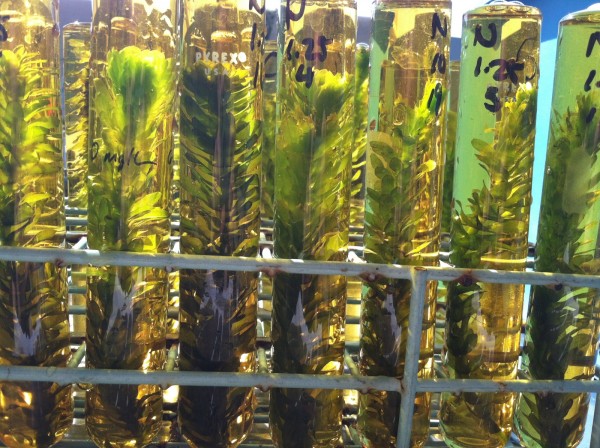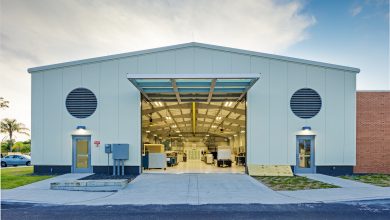Biochemistry major researches phytoremediation as a green solution to pollution
Phytoremediation to the Rescue
Nanotechnology is a rapidly expanding scientific discipline that focuses on the measurement and use of nanoparticles and plays an increasing role in modern life. Silver nanoparticles in particular have antimicrobial properties that are used in clothing to kill annoying or potentially harmful microorganisms. This double-edge technology also has the unintentional outcome of disrupting ecosystems when it washes out of clothing and eventually makes its way into rivers, lakes and oceans.
Lenny Bernas, a biochemistry major, sought to apply phytoremediation as a way to stabilize or reduce water that has been contaminated by silver nanoparticles with the help of Elodea Canadensis, a common aquatic plant found in Florida. “There are increased instances of silver and silver nanoparticles being released into waterways, and effects have been well documented for many plants, but not E. canadensis,” says Lenny.
Biochemistry Major Makes a Discovery
Lenny focused his research on observing how E. canadensis was effected by silver nanoparticles to see if it would be a good phytoremediation candidate. His research required him to perfect his research strategy while overcoming the instability of silver under typical light for extended periods of time. Additionally, he found that toxicity tests vary from plant to plant and he had to design a specific test just to observe the silver levels in E. Canadensis.
Once Lenny was able to identify and perfect a silver toxicity test specifically designed for E. Canadensis, he was able to prove his hypothesis. “I found that E. canadensis can accumulate a lot of silver without causing damage to itself and is therefore a good candidate for phytoremediation,” says Lenny.
His findings could not only help conservationists who are looking for a natural ways to remove heavy metals from waterways, but it also too home best in show for chemistry during the Northrop Grumman Engineering and Science Design Showcase.

Reflections on Project-Based Learning
“If I could do it all again, I would study other indicators of toxicity on E. canadensis,” Lenny says. “I spent a lot of time on procedures that were not suitable for this plant, so now that I know which procedures are effective, I would expand my study to ensure the effects on photosynthetic pigments are consistent with other toxicity indicators.”
Aspiring to study environmental or analytical chemistry as he joins the workforce, Lenny believes he has gained a lot from learning to understand the impacts of heavy metals and nanoparticles on aquatic systems and water quality and how phytoremediation could help alleviate environmental pressures.
“The main takeaway from this experience is that plants can be used to remove heavy metals like silver nanoparticles from the environment and this can be effectively accomplished E. canadensis,” says Lenny.
“My advice to future student design presenters would be to try to explain their research in simpler words and highlight its real world applications and bigger picture,” Lenny continued. “It’s easy to get bogged down with details, but explaining why your project matters is definitely the most important aspect.”





